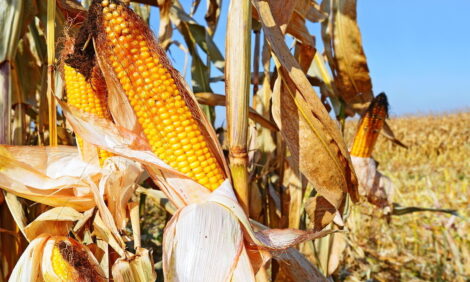



Mid-Summer Calf Working, Especially in Tight Times
By Dr. W. Dee Whittier, Extension Veterinarian, Cattle, VA-MD Regional College of Veterinary Medicine. Published in the Virginia Cooperative Extension Livestock Update, July 2008. Mid-summer processing of spring-born beef calves is one of the highest return procedures available in the cattle business.Producers should avoid the temptation to bypass this dividend just because returns from most other inputs have declined. Out of pocket costs for most items used have increased little so mostly the inputs are a little time and labor.
Mid-summer processing is based around this being recommended as the best time to deworm spring born calves. These babies are very susceptible to worms and are beginning to graze enough to pick up the worm larvae. Deworming in late June or early July will remove the first worms that are grazed up and prevent major recontamination of pastures. This coincides with a typical summer dry period so that calves then spend months with lower number of worms allowing increased growth.
Our studies show an extra 10 to 40 pounds of weaning weight from mid-summer deworming. Even if the added gain is valued at 50 cents a pound, with an expected average of 20 extra pounds, the return is $10 for an out of pocket cost of a dollar or so and a little time and effort.
A common question asked is whether the more expensive dewormers are justified. In general, the difference between the higher priced pour on dewormers and the generics is the label claim for longer activity. Some dewormers do a fine job of killing worms that are in the calves, but are quickly gone so that worm larvae that are grazed up beginning a few days later can establish themselves and cause damage to cattle. Our studies show that the dewormers with label claims for “persistent activity”, meaning they stay in the system and kill incoming worms for 2 or 3 weeks, give a few extra pounds of gain. When these calves are quite small thus requiring a small dose, the extra cost may well be justified.
Administration of a growth promotant implant is the second procedure with excellent cost/benefit opportunity for mid-summer processing. Even if calves were implanted at birth or at a spring working, a second implant will mean extra pounds. Most implant products would result in an extra 10 to 30 pounds depending on the duration of action of the product and the gain rate of calves. The out of pocket cost is only about a dollar and the labor can be shared with the deworming labor.
Implanting has lost some popularity in recent years. Whatever one’s view of implanting is, from an economic viewpoint it needs to be considered by most producers. A very few have developed marketing approaches wherein they will be economically rewarded for not implanting calves. Most calves, however, are marketed into programs where they will be implanted so that the cow/calf producer who foregoes the extra pounds is in no position to be rewarded for not using this technology.
Mid-summer working may also be a time when vaccinations can be administered. Calves are generally old enough at this point so that immunity that they received from the dam at birth will not interfere with the development of their own immunity from the vaccine. Vaccines such as 7-way clostridial or respiratory vaccines may well be given at this time. Fly control is yet another procedure that may be performed mid-summer as cattle are put down the chute. The many approaches to control administered through a chute include insecticide ear tags, dusting, spraying and pour ons. Any of these may result in extra pounds at weaning as well as decreasing the risk of pinkeye.
While cattle are up, treatment of midsummer diseases may be necessary. Be on the lookout for pinkeye cases and lamenesses. Since breeding is typically ongoing looking for bull injuries or removing the bull if the season is over can also be done.
In summary a number of procedures should be considered for mid-summer administration. These include:
- Deworming nursing calves
- Administration of a growth promotant implant
- Fly control
- Vaccination
- Treatment of pinkeye cases and lameness
- Monitoring reproduction
Producers should avoid the temptation to do less since it appears profits may be depressed. Mid-summer processing is a setting where minimal monetary inputs can return significant pounds of calf at weaning.
July 2008


